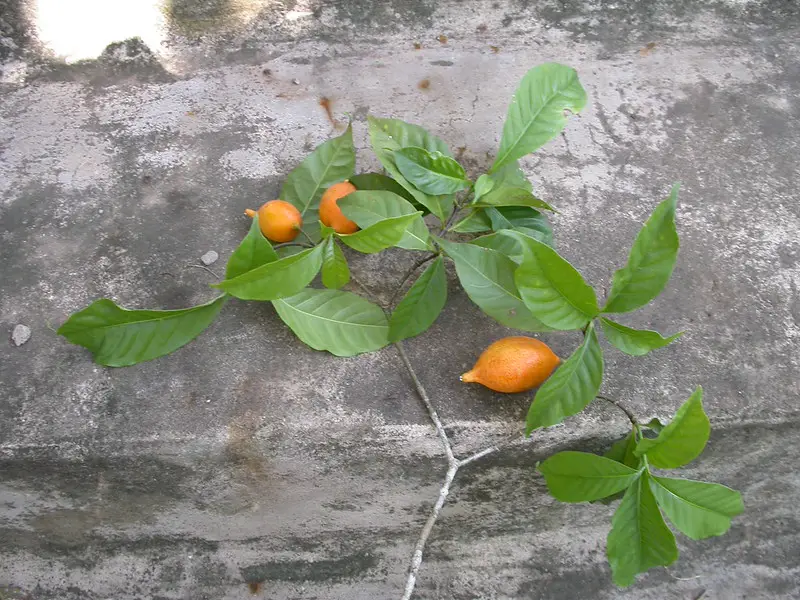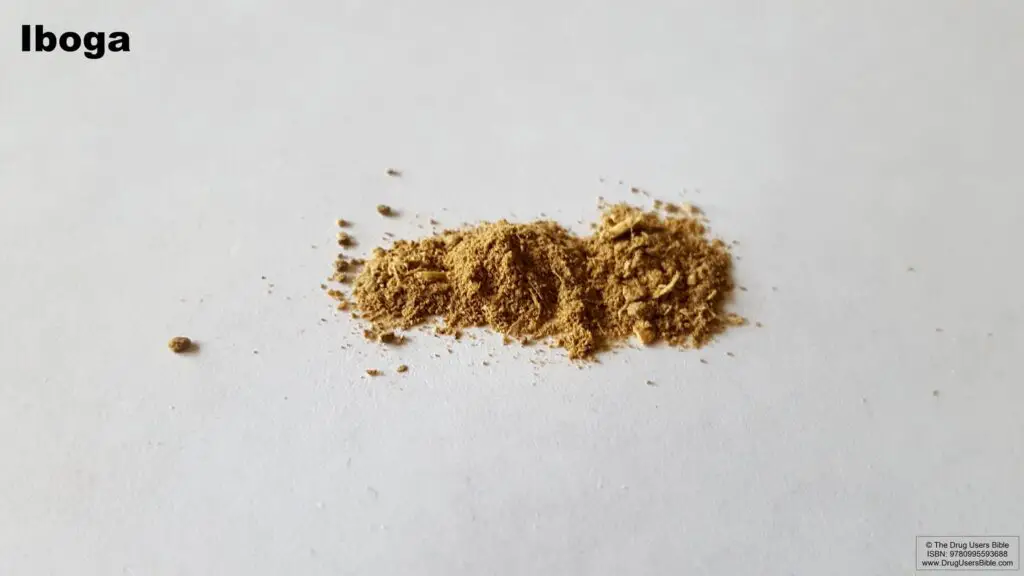Click to jump to a table comparing ayahuasca vs ibogaine.
In recent years, we’ve seen a rise in the popularity of ayahuasca and ibogaine as potential tools for addiction recovery and healing. This blog post aims to provide you with an overview of these plant medicines, including their history, traditional uses, active ingredients, modern benefits, potential risks, and legal status. By the end of this post, you should have a better understanding of both plant medicines and be able to make a more informed decision about which one is suitable for you, particularly if you’re struggling with addiction.

Table of Contents
Ayahuasca
Let’s start with Ayahuasca, also known as yage. This brew is made from the ayahuasca vine (Banisteriopsis caapi) and other plants containing dimethyltryptamine (DMT), a potent psychoactive compound. Ayahuasca use has a long history in South American indigenous cultures, where it has been utilized for thousands of years in shamanic rituals for healing, communication with spirits, and gaining insights into the nature of reality.
If you’re looking for an ayahuasca retreat in Ecuador, make sure to visit our retreats’ page.
Active Ingredients and Effects on the Body
Ayahuasca contains two primary active ingredients: DMT and harmine, a monoamine oxidase inhibitor (MAOI). Harmine allows DMT to be active when ingested orally. Ayahuasca can induce profound and transformative experiences, including altered states of consciousness, visual and auditory hallucinations, and intense emotions, lasting for several hours. It is believed that spirits guide the ayahuasca experience, helping individuals overcome obstacles and find healing.
Traditional Uses and Spiritual Significance
In traditional use, Ayahuasca is seen as a tool for healing, communication with spirits, and gaining insight into the nature of reality. It is often used in shamanic rituals that involve singing, chanting, and other forms of prayer or meditation. The experience is believed to be guided by spirits that help individuals overcome obstacles and find healing.
Modern Uses and Benefits
In recent times, Ayahuasca has become popular as a treatment for addiction and mental health issues such as depression, anxiety, and PTSD. Studies have shown promising results, with the intense experiences induced by Ayahuasca enabling individuals to confront their underlying emotional issues and find the motivation to make positive changes in their lives.
Risks and Potential Side Effects
However, Ayahuasca is not without risks. It can be psychologically challenging and overwhelming, leading to potential distress, and physical side effects can include nausea, vomiting, and diarrhea. In some cases, it can result in more severe health complications, particularly in people with pre-existing medical conditions or those taking certain medications.
Legal Status
As for legal status, Ayahuasca’s legality varies by country. In the United States, it’s classified as a Schedule I drug, illegal for use or possession, except for religious or research purposes. Meanwhile, in countries like Ecuador, Brazil, and Peru, where Ayahuasca has traditional roots, it is legal and widely available.


Ibogaine
Now, let’s shift our focus to Ibogaine, a psychoactive substance derived from the root bark of the Tabernanthe iboga plant, which is indigenous to Central Africa.
The root bark of the iboga plant has been used as a sacred tool in the Bwiti religion to promote social and spiritual bonding. The religion also served as a way for the people to resist the French colonialist occupation, and it continues to hold political significance. Traditionally, ibogaine has been used as a stimulant and to treat infertility. The word “iboga” comes from the Tsogo language and means “to take care of.”
The Pygmies are said to have initiated the use of iboga root bark in the Bwiti religion. In the Gabonese Republic, iboga is considered “Holy Wood” and is believed to provide access to the magical universe, allowing communication with ancestors and other entities. It is used in rites of passage to teach the neophyte about the past, present, future, and the collective worldview of the Bwiti. Through the initiation process, the individual gains a new perspective and can achieve clairvoyance that lasts beyond the initiation.
In the 1960s, it was introduced to the West as a potential treatment for addiction.
Active Ingredients and Effects on the Body
Ibogaine’s main active ingredient is also called ibogaine. It interacts with the brain’s reward system, which can result in altered states of consciousness, visual and auditory hallucinations, and intense introspection, lasting several hours with residual effects lasting for several days. In traditional use, Ibogaine is seen as a tool for spiritual growth and transformation.
It’s worth noting that ibogaine can also be found in other plants, such as Voacanga africana. Although extracting it requires an additional step, the resulting compound is almost indistinguishable from ibogaine derived from Tabernanthe iboga. The ibogaine used in the new ICEERS clinical study actually comes from Voacanga africana.
If you washed your hands, the water would be so alive on your skin, it
Ibogaine patient
would feel incredible. And obviously, after the experience is over, if you
eat something for the first time, like a piece of fruit. It’s like the best
piece of fruit you’ve ever ate in your life because everything is reset in
your sinuses, in your taste buds and a lot of other things.
Traditional Uses and Spiritual Significance
In traditional use, Ibogaine is seen as a tool for spiritual growth and transformation. It is used in Bwiti ceremonies as a way to connect with ancestors and spirits, gain insight into one’s purpose, and find healing. The experience is often guided by a shaman or healer who helps individuals navigate the intense psychological and emotional experiences induced by the substance.

Modern Uses and Benefits
In modern times, Ibogaine has gained popularity as a potential treatment for addiction, particularly to opioids and other drugs of abuse. It works by resetting the brain’s reward system, reducing cravings, and helping individuals address the underlying psychological and emotional issues that contribute to addiction. Promising results have been reported, with individuals experiencing reduced cravings and improved mental health following treatment.
[It] brought me to a point where I thought there is really no point in
Ibogaine patient
continuing it all and I was pretty much ready to just die right there.
Feeling like the loneliest person on planet earth, just being in a total
desert and just nothing. Nothing to come from and nothing to go to…
like for all human beings. Every kind of existence is totally senseless. And
after that, where I was ready to just die, it kind of went into the next
phase where, and that brought an immense relief with it. […] I felt all
arteries and veins opened up, so you feel incredibly hot. I felt like every
single cell in my body and my brain is like vibrating and burning in a
way. So it felt like a total body cleanse on a cellular level as well.

Stages in the ibogaine experience
During the ibogaine experience, individuals typically go through three or four stages. The total duration of the experience varies from 24 to 96 hours, and most people perceive it in stages.
The first stage is physically uncomfortable and often described as rough due to symptoms such as ataxia, intense nausea and vomiting, tachycardia, and the feeling of dying.
For those struggling with drug dependence, this stage can be seen as detoxification, where withdrawal symptoms and cravings are alleviated. This stage typically lasts from 2 to 14 hours.
I would see a young face that was very quickly morphing and aging in
Ibogaine patient
front of me. I would see this being go from young adulthood to old age.
Actually they were just disembodied heads that I’ve recognized as
ancestors. And then the heads started to look down as they disintegrated.
100 anthropology of consciousness.
And this happened with five or six or seven female ancestors. I didn’t
know who they were, but my interpretation was that they were my
ancestors, but they were people that I didn’t know of.
The second stage is more comfortable, allowing the individual to have more control over their body and interact with the environment. Most people refer to this as the main visionary experience, which can vary in duration from 4 to 30 hours.
The third stage is when the individual gradually comes out of the experience, often resting due to physical and psychological exhaustion. This stage can last up to 72 hours and starts before or after the first sleep.
While the acute effects of ibogaine terminate within 96 hours, the experience can continue to have an impact on the individual for weeks or even months after intake. This is often referred to as the fourth stage.
I started to feel my heart beat really fast and really strong. And of course
https://anthrosource.onlinelibrary.wiley.com/doi/abs/10.1111/anoc.12119
because I’ve had been really aware of all the dangers of ibogaine and
giving out information on it, I was convinced that I was having some
kind of heart problem. And it was at this point that I’ve realized that I
got a real problem because my sitter was downstairs and I couldn’t… I
was feeling myself sink inside myself, so that I couldn’t talk or even shout
for help. I kind of just dropped inside and couldn’t come out on the
outside and express my anxiety. I’ve probably struggled for what must
have been half an hour, convinced that I must be dying and unable to
tell anyone about it. Really freaking out, like a proper anxiety attack
probably. And then I realized okay, I just… if I’m going to die, I’m
going to die. That’s it, you know. I just had to surrender to it at a certain
point. So, when I surrendered to it, then suddenly, actually everything
kind of relaxed and subsided.
Risks and Potential Side Effects
As with any treatment, Ibogaine has potential risks and side effects that need to be considered before use. While it has shown promise in treating addiction and mental health issues, its intense experiences can be overwhelming and may cause psychological distress. Physical side effects can also occur, such as nausea, vomiting, and tremors, and those with pre-existing medical conditions or who are taking certain medications may be at greater risk.
While Ibogaine can have adverse effects on the kidneys and liver, deaths related to the use of this plant medicine are most commonly caused by its impact on the heart. Studies have shown that, due to its stimulant properties, Ibogaine can increase heart rate to the point of cardiac arrest. Unfortunately, Ibogaine clinics often operate without proper regulation or medical standards, such as monitoring heart rate and testing for drug interactions, which can put patients at risk. It is crucial to approach Ibogaine treatment with caution and ensure that proper safety measures are in place.
Legal Status
It’s important to note that the legal status of Ibogaine varies by country. In the United States, it is classified as a Schedule I drug, making it illegal to use or possess. However, in some countries such as Mexico, clinics offer Ibogaine treatment for addiction, which is legal.
Ayahuasca vs. Ibogaine
Comparing Ayahuasca and Ibogaine, there are significant differences between the two plant medicines. These include their active ingredients, duration and intensity of experience, and traditional and modern uses.
When it comes to ayahuasca and other psychedelics, the emphasis is usually on psychotherapy. These substances can offer individuals a window into the root causes of their addictive behaviors and support them in staying sober by applying these insights. However, ibogaine is quite different. While it does indeed produce psychological revelations similar to other psychedelics, it also boasts a unique physical effect that alleviates symptoms of opioid withdrawal. In contrast, ayahuasca has been used as a therapy for substance use disorders in Peru, but it does not provide any pharmacological anti-addictive effects. It’s important to note that the only thing ayahuasca and iboga have in common is their classification as hallucinogens.
The acute effects of ibogaine appear to distinguish it from classical serotonergic hallucinogens like psilocybin, LSD, or ayahuasca in a number of ways. Firstly, the duration of the whole acute experience seems to differ significantly. Secondly, the nature of the experience appears to be more observer-like. And thirdly, the after-effects of the experience can be more long-lasting, and have been shown to possess anti-craving and anti-withdrawal properties.

Table: Ayahuasca vs. Ibogaine
| Plant origin | Ayahuasca is a brew made from the Banisteriopsis caapi vine and other plants containing DMT, a powerful psychedelic substance. | Ibogaine is derived from the root bark of the iboga plant, a shrub native to Central Africa. |
|---|---|---|
| Cultural roots | Ayahuasca has been used for centuries by indigenous tribes in the Amazon basin for spiritual and medicinal purposes. | Ibogaine has been used for centuries by the Bwiti people of Central Africa for spiritual and medicinal purposes. |
| Mode of action | Ayahuasca works by activating serotonin receptors in the brain, which can lead to profound psychological and emotional experiences. | Ibogaine works by interacting with the brain's opioid receptors, which can help to alleviate withdrawal symptoms and cravings associated with addiction. |
| Duration | The effects of Ayahuasca can last between 4-6 hours, with some residual effects lasting up to 24 hours. | The effects of Ibogaine can last between 24-48 hours, with some residual effects lasting up to several weeks. |
| Medical use | Ayahuasca has been investigated for its potential therapeutic benefits in treating depression, anxiety, addiction, and PTSD. | Ibogaine has been investigated for its potential therapeutic benefits in treating addiction, particularly to opioids. |
| Risks | Ayahuasca can cause vomiting, diarrhea, and other physical symptoms, as well as psychological distress in some individuals. It can also be dangerous if taken in combination with certain medications or in individuals with certain medical conditions. | Ibogaine can cause nausea, vomiting, and other physical symptoms, as well as psychological distress in some individuals. It can also be dangerous if taken in combination with certain medications or in individuals with certain medical conditions, particularly heart conditions. |
| Legality | The legality of Ayahuasca varies depending on the country and the context in which it is used. It is legal in some countries for religious or therapeutic purposes, while in others it is illegal or restricted. | The legality of Ibogaine varies depending on the country and the context in which it is used. It is illegal in some countries, while in others it is legal or restricted for medical or therapeutic purposes. |
Which One is Right for You?
When choosing between Ayahuasca and Ibogaine, it’s important to consider personal preferences, medical history, and the severity of addiction or mental health issues. It’s also vital to research and understand the potential risks and benefits of each substance, as well as the legal status in your country or state. Consulting with a qualified healthcare provider is essential before embarking on either journey.
Conclusion
Remember, plant medicines such as Ayahuasca and Ibogaine can be powerful tools for healing and transformation, but they are not a magic bullet. They require dedication, perseverance, and a willingness to explore the depths of the self. The work of healing and personal growth is an ongoing process that requires respect, caution, and a spirit of inquiry.
Regardless of which substance you choose, it is important to approach the experience with an open mind and a willingness to engage in introspection and self-reflection. Plant medicines such as Ayahuasca and Ibogaine can be powerful tools for healing and transformation, but they are not a magic bullet. Ultimately, the work of healing and personal growth is an ongoing process that requires dedication, perseverance, and a willingness to explore the depths of the self.
By approaching plant medicine with an open mind and a willingness to engage in introspection and self-reflection, we can open ourselves up to new insights, perspectives, and possibilities for growth and transformation. Whether you choose Ayahuasca, Ibogaine, or another plant medicine, the journey of healing and self-discovery can be richly rewarding and deeply transformative, offering new paths for growth, connection, and meaning in our lives.

